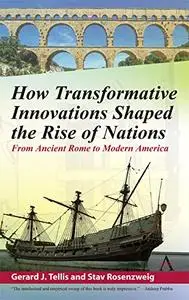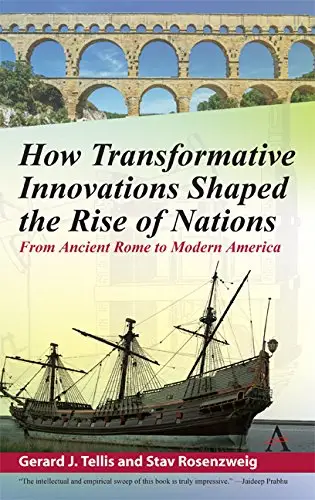How Transformative Innovations Shaped the Rise of Nations: From Ancient Rome to Modern America by Stav Rosenzweig, Gerard J. Tellis
2018 | ISBN: 1783087323 | English | 332 pages | PDF | 11 MB
2018 | ISBN: 1783087323 | English | 332 pages | PDF | 11 MB
The first thesis of 'How Transformative Innovations Shaped the Rise of Nations' is that economic growth, national dominance and global leadership are fueled primarily by embracing innovations, in particular transformative innovations.
A transformative innovation is one that changes the lives of people, reshapes the structure of society, disrupts the balance of power within and among nations, and creates enormous wealth for its sponsors. The adoption of a transformative innovation spawns numerous other related or consequent innovations. It provides a competitive advantage to a nation and may propel a small, backward region to world leadership in as short a time as a century. Further, the transformative innovation can sometimes itself promote the positive environment that leads to further innovations. Thus, embracing innovation can start a positive cycle of wealth creation, economic dominance and a positive environment for further innovation. This positive cycle continues as long as the environment that spawned the innovation remains supportive or until another transformative innovation arises elsewhere.
The second thesis of 'How Transformative Innovations Shaped the Rise of Nations' is that innovation is not adopted randomly across time and nations. Rather, it is sustained by an environment characterized by key institutional drivers within a country or region, three of the most important of which are openness to new ideas, technologies and people, especially immigrants; empowerment of individuals to innovate, start businesses, trade and keep rewards for these activities; and competition among nations, patrons, entrepreneurs or firms. Geography, resources, climate, religion and colonization probably played a role as well. However, past treatments of the rise of nations have overemphasized the role of these other factors; they have downplayed or ignored the role of innovations and the institutional drivers that led to their development and adoption.



